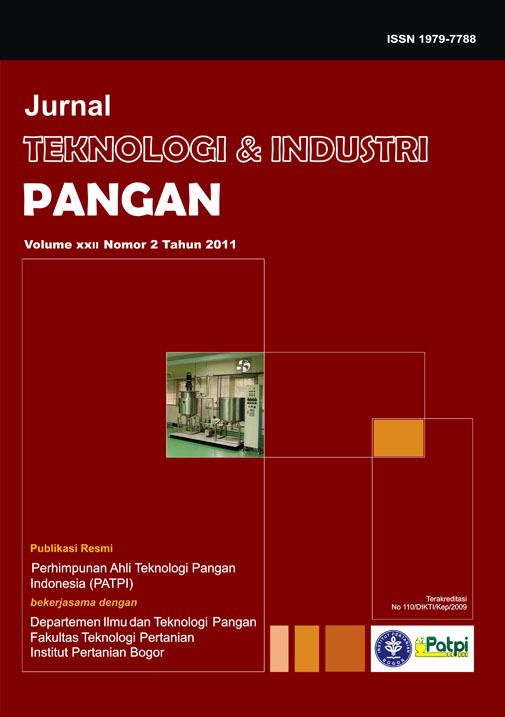<p class="MsoNormal" style="text-align:center;" align="center"><strong><span style="font-size:13pt;" lang="de" xml:lang="de">PENGHAMBAT α AMILASE: JENIS, SUMBER, DAN POTENSI PEMANFAATANNYA</span></strong></p> <p class="MsoNormal" style="text-align:center;" align="center"><strong><span style="font-size:13pt;" lang="de" xml:lang="de">DALAM KESEHATAN</span></strong></p> <p class="MsoNormal" style="margin-top:18pt;text-align:center;" align="center"><span style="font-size:12pt;" lang="in" xml:lang="in">[</span><span style="font-size:12pt;" lang="de" xml:lang="de">α Amylase Inhibitors: Types, Sources, and Their Potential Utilization for Health Purposes</span><span style="font-size:12pt;" lang="in" xml:lang="in">]</span></p> <p class="MsoNormal" style="margin-top:18pt;text-align:center;" align="center"><strong><span lang="de" xml:lang="de">Budiasih Wahyuntari</span></strong><strong><span lang="in" xml:lang="in">*</span></strong></p> <p class="MsoNormal" style="margin-top:6pt;text-align:center;" align="center"><span style="font-size:10pt;" lang="de" xml:lang="de">Laboratoria Pengembangan Teknologi Industri Agro-Biomedika (LAPTIAB), Badan Pengkajian dan Penerapan Teknologi, Kawasan Pusat Teknologi dan Ilmu Pengetahuan (PUSPIPTEK) gedung no 610, Serpong, Tangerang 15310</span></p> <p class="MsoNormal" style="text-align:center;" align="center"><span style="font-size:10pt;" lang="in" xml:lang="in"> </span></p> <p class="MsoNormal" style="text-align:center;" align="center"><span style="font-size:9pt;">Diterima </span><span style="font-size:9pt;" lang="in" xml:lang="in">09</span><span style="font-size:9pt;" lang="in" xml:lang="in"> </span><span style="font-size:9pt;" lang="in" xml:lang="in">Desember</span><span style="font-size:9pt;"> 200</span><span style="font-size:9pt;" lang="in" xml:lang="in">9</span><span style="font-size:9pt;"> / Disetujui 19 Desember 201</span><span style="font-size:9pt;" lang="in" xml:lang="in">1</span><strong></strong></p> <p class="MsoNormal" style="margin:18pt 0cm .0001pt 27pt;text-align:center;" align="center"><strong><em><span style="font-size:12pt;" lang="de" xml:lang="de">SUMMARY</span></em></strong></p> <p class="MsoNormal" style="text-indent:14.2pt;"><em><span style="font-size:10pt;" lang="in" xml:lang="in"> </span></em></p> <p class="MsoNormal" style="text-indent:14.2pt;"><em><span style="font-size:9pt;">Alpha amylase inhibitors affect carbohydrate metabolism in digestive system. The inhibitors induce carbohydrate tolerance, fullness and prolonging gastric emptying that might be used to aid in diabetic and obesity treatment. There are two types of </span></em><span style="font-size:9pt;">α</span><span style="font-size:9pt;" lang="in" xml:lang="in">-</span><em><span style="font-size:9pt;"> amylase inhibitors, proteinaceous and non-proteinaceous ones. Proteinaceous inhibitor is classified into seven classes including legumes, lectin, knottin, cereal, Kunitz, </span></em><em><span style="font-size:9pt;font-family:Symbol;"><span>g</span></span></em><em><span style="font-size:9pt;">-thionin and thaumatin types. Plant proteinaceous inhibitors are present in cereals and legumes. Some non-proteinaceous inhibitors include flavonid, polyphenols, organic acid that might be produced by microbes or extracted from plants such as acarbose, saponin dan cardiac glycoside, gallic acid, proto-catechuic acid, caffeic acid, ellagic acid, ferulic acid, quercetin hibiscus acid and </span></em><span style="font-size:9pt;">α-, β- and γ-cyclodextrin.</span><em></em></p> <p class="MsoNormal" style="text-indent:14.2pt;"><em><span style="font-size:9pt;" lang="in" xml:lang="in"><span> </span></span></em><em></em></p> <p class="MsoNormal"><strong><em><span style="font-size:9pt;" lang="de" xml:lang="de">Key words:</span></em></strong><em><span style="font-size:9pt;" lang="de" xml:lang="de"> inhibitor amylase, anti obesity, diabetes</span></em><em></em></p>
Abstract
PENGHAMBAT α AMILASE: JENIS, SUMBER, DAN POTENSI PEMANFAATANNYA
DALAM KESEHATAN
[α Amylase Inhibitors: Types, Sources, and Their Potential Utilization for Health Purposes]
Budiasih Wahyuntari*
Laboratoria Pengembangan Teknologi Industri Agro-Biomedika (LAPTIAB), Badan Pengkajian dan Penerapan Teknologi, Kawasan Pusat Teknologi dan Ilmu Pengetahuan (PUSPIPTEK) gedung no 610, Serpong, Tangerang 15310
Diterima 09 Desember 2009 / Disetujui 19 Desember 2011
SUMMARY
Alpha amylase inhibitors affect carbohydrate metabolism in digestive system. The inhibitors induce carbohydrate tolerance, fullness and prolonging gastric emptying that might be used to aid in diabetic and obesity treatment. There are two types of α- amylase inhibitors, proteinaceous and non-proteinaceous ones. Proteinaceous inhibitor is classified into seven classes including legumes, lectin, knottin, cereal, Kunitz, g-thionin and thaumatin types. Plant proteinaceous inhibitors are present in cereals and legumes. Some non-proteinaceous inhibitors include flavonid, polyphenols, organic acid that might be produced by microbes or extracted from plants such as acarbose, saponin dan cardiac glycoside, gallic acid, proto-catechuic acid, caffeic acid, ellagic acid, ferulic acid, quercetin hibiscus acid and α-, β- and γ-cyclodextrin.
Key words: inhibitor amylase, anti obesity, diabetes

